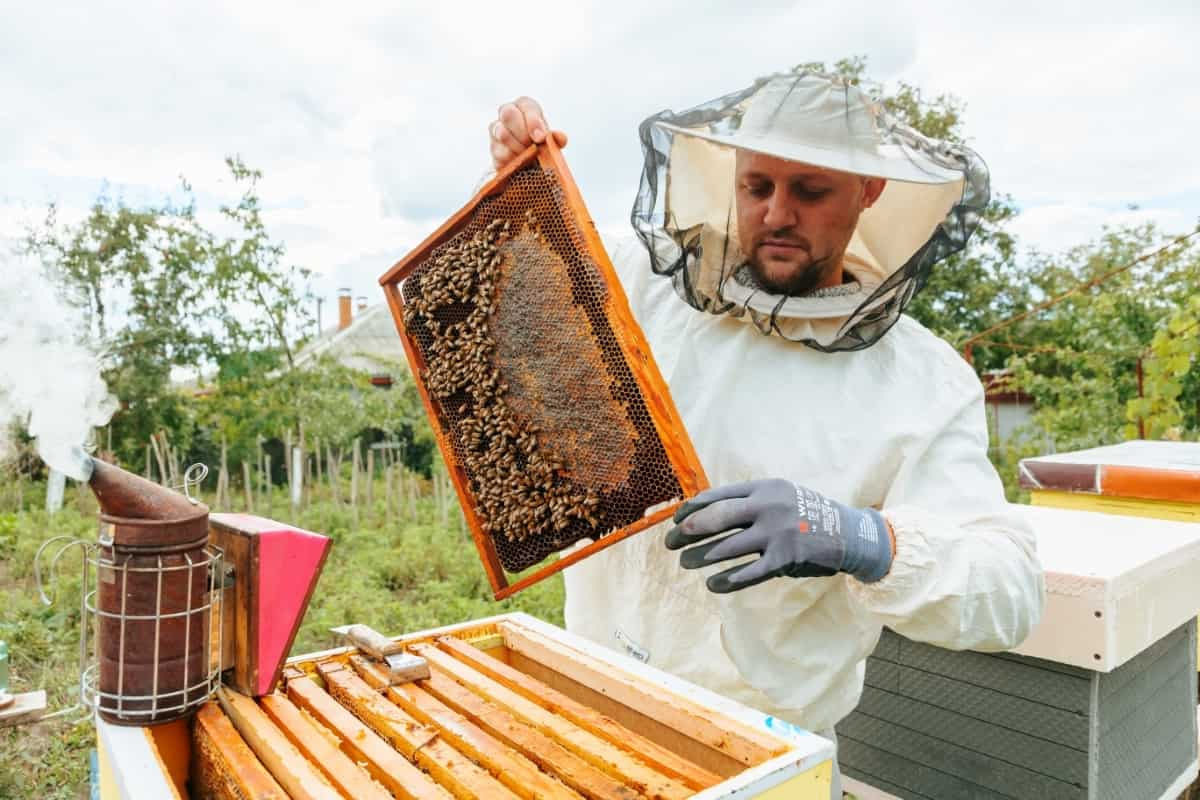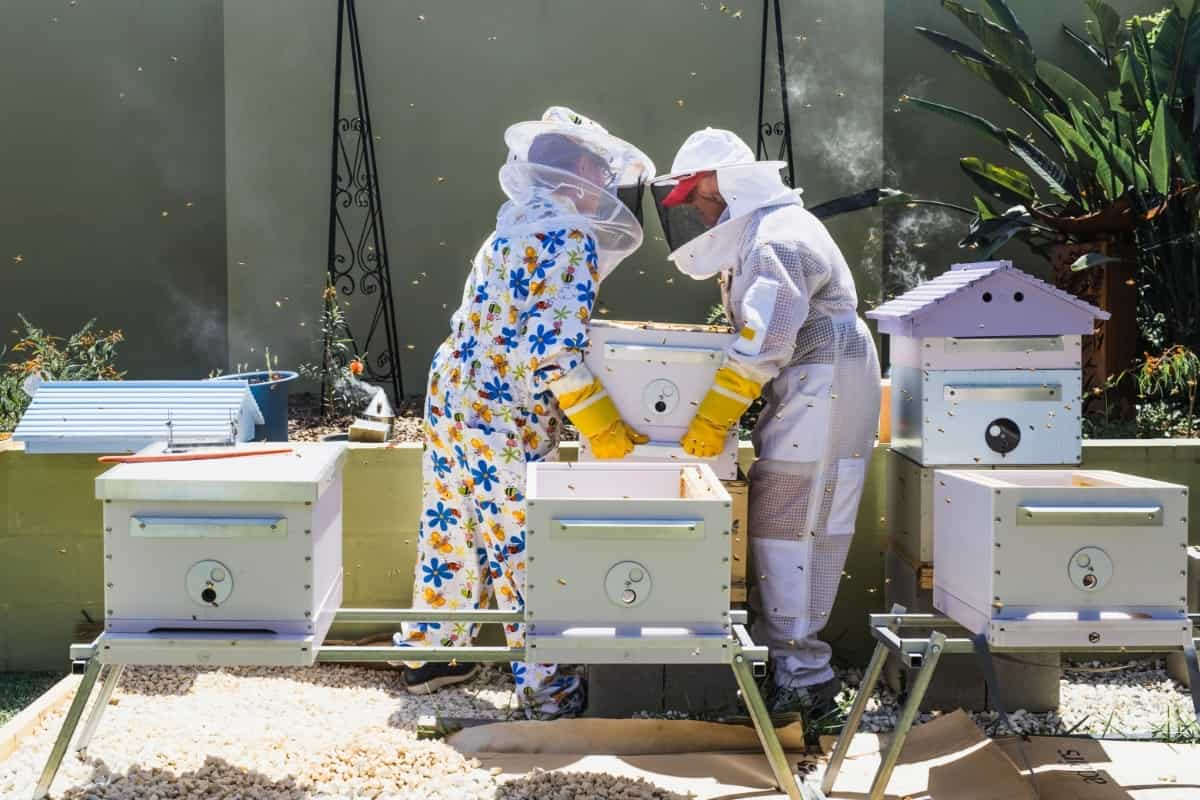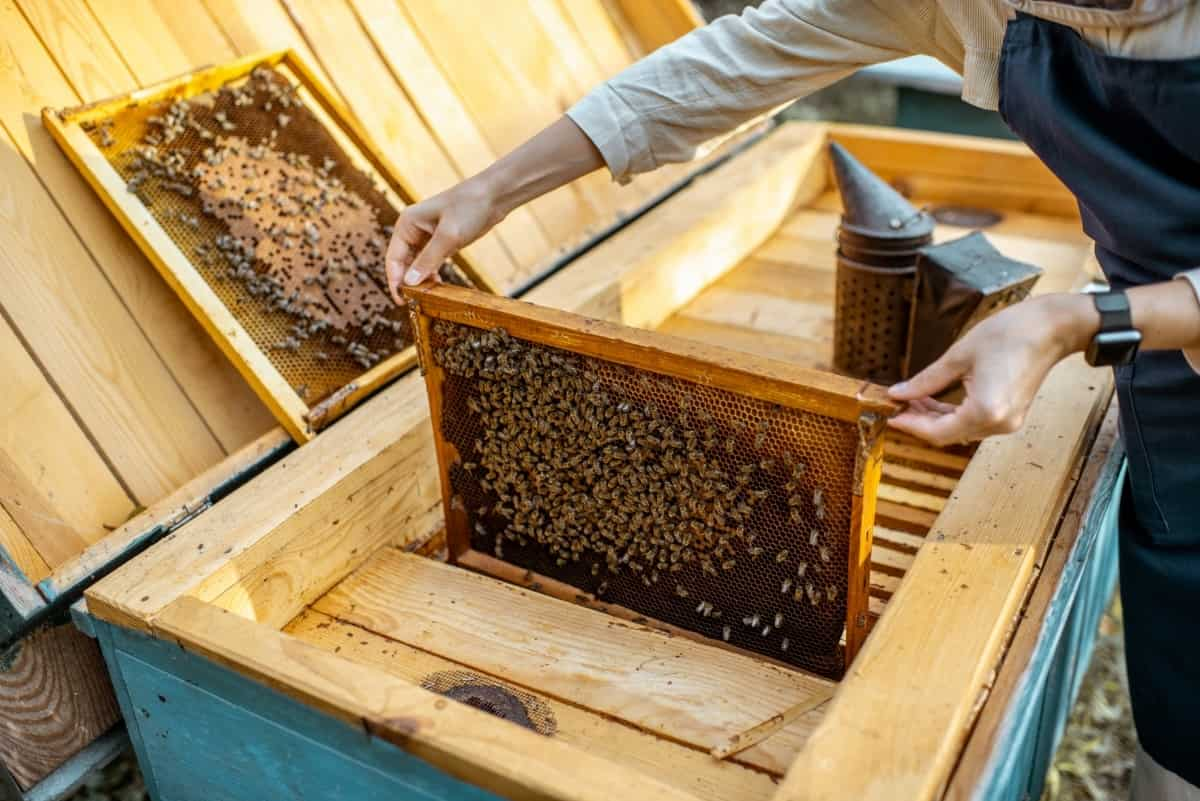Embarking on a honey bee project or beekeeping project can be a rewarding venture. Honey bee farming not only contributes to environmental sustainability but also offers a chance to start a honey bee-keeping business, which can be profitable. However, is beekeeping profitable in the long run?

This article delves into various aspects of a beekeeping project, including the costs and profits associated with managing five hives. We will cover initial investment, long-term expenses, profit potential, feed costs, infrastructure, labor, and health care expenses in beekeeping.
Beekeeping Project Report
Initial Investment in Beekeeping: Understanding the Costs Involved
The journey of beekeeping begins with initial investments, which include purchasing hives, acquiring bees, and buying protective gear and tools. For five hives, the investment might be around $750, considering hives costing between $50 and $150 each, bees priced at about $100 to $200, and the necessary protective gear and tools ranging from $50 to $150. This initial outlay is crucial for setting up a sustainable and efficient honey bee farming operation. It’s a foundational step that sets the stage for future profitability and efficiency in the beekeeping project.
Calculating the Long-Term Expenses of Beekeeping
Ongoing expenses in beekeeping include feed, medications, treatments, and replacing queens. Annually, for five hives, these expenses can amount to about $475, considering $35 for feed, $35 for medications, and $25 for queen replacement per hive. Long-term expenses are recurrent and essential for maintaining the health and productivity of the hives. They play a significant role in the overall financial planning and management of the beekeeping project, ensuring the hives remain productive and profitable over time.
Evaluating the Profit Potential of Beekeeping Operations
With each hive potentially producing 30 to 60 pounds of honey annually and honey selling for $5 to $15 per pound, the total income from five hives could reach around $1600. This projection, however, depends on local market conditions and the efficiency of the beekeeping operations. Understanding and tapping into the market potential is crucial for maximizing profits in the honey bee project.
The Impact of Feed Costs on Beekeeping Profitability
Feed costs, estimated at $20 to $50 annually per hive, significantly impact beekeeping profitability. Especially in regions where nectar sources are scarce or during winter, supplemental feeding is vital for the survival and productivity of the hives. Effective management of feed costs without compromising the health of the bees is a key factor in maintaining the profitability of the beekeeping project.
In case you missed it: Common Bee Pests and Diseases: Identification, Control, Prevention, and Treatment

Infrastructure and Equipment Costs in Beekeeping
In addition to hives and bees, investing in infrastructure and equipment like smokers, hive tools, and extraction equipment is essential. These one-time investments, though substantial initially, are crucial for efficient hive management and honey extraction. Infrastructure and equipment costs, although a part of the initial investment, play a long-term role in the operational efficiency and success of the beekeeping project.
Labor and Management Expenses in Beekeeping Operations
The success of a honey bee farming project also hinges on effective labor and management. Whether it’s regular hive inspections, honey extraction, or managing bee health, labor costs need to be accounted for. These expenses, though variable, are crucial for the smooth running of beekeeping operations and directly influence the profitability and sustainability of the project.
Health and Veterinary Care Costs in Beekeeping
Finally, the health of the bees is paramount. Costs associated with veterinary care, treatments for pests and diseases, and regular health checks are essential for maintaining productive hives. Budgeting around $20 to $50 per hive per year for these expenses is crucial. Taking good care of bees’ health and veterinary needs isn’t just about keeping them well; it also really helps make the beekeeping project successful and profitable.
Marketing and Distribution Costs for Beekeeping Products
The success of a honey bee project is not just about producing honey and hive products; it’s also about effectively marketing and distributing them. Marketing costs can include branding, packaging, advertising, and promoting products in local markets or online platforms. Distribution costs involve the expenses of transporting products to markets or direct customers.
In case you missed it: Bee Breeding and Genetics: Improving Honey Bee Stock

Both are critical for establishing a strong presence in the market and can vary significantly based on the scale of operation and the chosen distribution channels. These costs must be strategically managed to ensure they don’t outweigh the profits from sales, making them a crucial aspect of the overall financial planning in beekeeping.
Risk Management and Insurance Costs in Beekeeping
Beekeeping involves various risks, including hive theft, natural disasters, pest infestations, and disease outbreaks. Managing these risks often necessitates investment in insurance and other risk management strategies. Insurance costs, particularly liability insurance, protect against potential legal issues and accidents.
Additionally, investments in security measures for hives, disease prevention protocols, and contingency planning for environmental risks are part of risk management. These costs, while sometimes overlooked, are essential for safeguarding the investment and ensuring the long-term sustainability of the beekeeping venture.
Assessing the Overall Financial Viability of Beekeeping Ventures
Determining the financial viability of a beekeeping operation involves a comprehensive analysis of all costs—initial, ongoing, marketing, distribution, risk management, and insurance—against the potential income from honey and other hive products. This assessment should consider factors like local market demand, pricing strategies, efficiency of operations, and cost-control measures. Understanding the break-even point and projecting future profitability is key.
Additionally, exploring diversification options, like offering pollination services or conducting beekeeping workshops, can enhance income streams. The overall financial health of a beekeeping venture is not solely about immediate profits but also about long-term sustainability and growth potential.
Small-Scale Beekeeping Project Report
| Category | Details | Estimated Costs for 5 Hives |
| Initial Setup Costs | ||
| – Hives | Basic hive costs | $250 – $750 |
| – Bees | Package bees or nucleus colony with a mated queen | $500 – $1000 |
| – Protective Gear and Tools | Suits, gloves, veils, smokers, hive tools | $200 – $750 |
| Ongoing Expenses | ||
| – Feed | Supplemental feed for bees | $100 – $250 annually |
| – Medications and Treatments | Pest and disease control | $100 – $250 annually |
| – Replacement Queens | Cost for new queens | $100 – $200 annually |
| Operating Costs | ||
| Transportation | Moving hives for pollination services | Variable |
| Insurance | Liability insurance for beekeeping activities | Variable |
| Potential Income | ||
| Honey Sales | Based on local market prices | $1600 (estimated) |
| Other Hive Products | Beeswax, pollen, propolis, royal jelly | Variable |
| Additional Considerations | Time, labor, market research | |
| Marketing & Distribution | Branding, packaging, advertising, transport | Variable |
| Risk Management & Insurance | Investments in security, disease prevention, insurance | Variable |
| Overall Financial Viability | Comprehensive analysis of costs vs. income |
In case you missed it: Beekeeping Suits and Protective Gear: Choosing the Right Fit

Conclusion
Small-scale beekeeping offers a promising venture with potential profitability, provided there’s careful management of costs, efficient production, and strategic marketing. However, it requires a comprehensive understanding of both the financial and operational aspects to ensure long-term success and sustainability.
- Feed Your Flock for Less: Top 10 Tips to Save on Chicken Feed
- Ultimate Guide to Ossabaw Island Hog: Breeding, Raising, Diet, and Care
- Hatching Answers: The Top 10 Reasons Your Chickens Aren’t Laying Eggs
- Eggs and Economics: Breaking Down the Cost of Raising Backyard Chickens
- Defend Your Greens: Proven Methods to Keep Iguanas Out of Your Garden
- Ultimate Guide to Cinnamon Queen Chicken: A Comprehensive Guide for Beginners
- Ultimate Guide to California Tan Chicken: Breeding, Raising, Diet, Egg-Production and Care
- Ultimate Guide to Marsh Daisy Chicken: Breeding, Raising, Diet, and Care
- 10 Types of Chicken Farming Businesses You Can Start for Profits